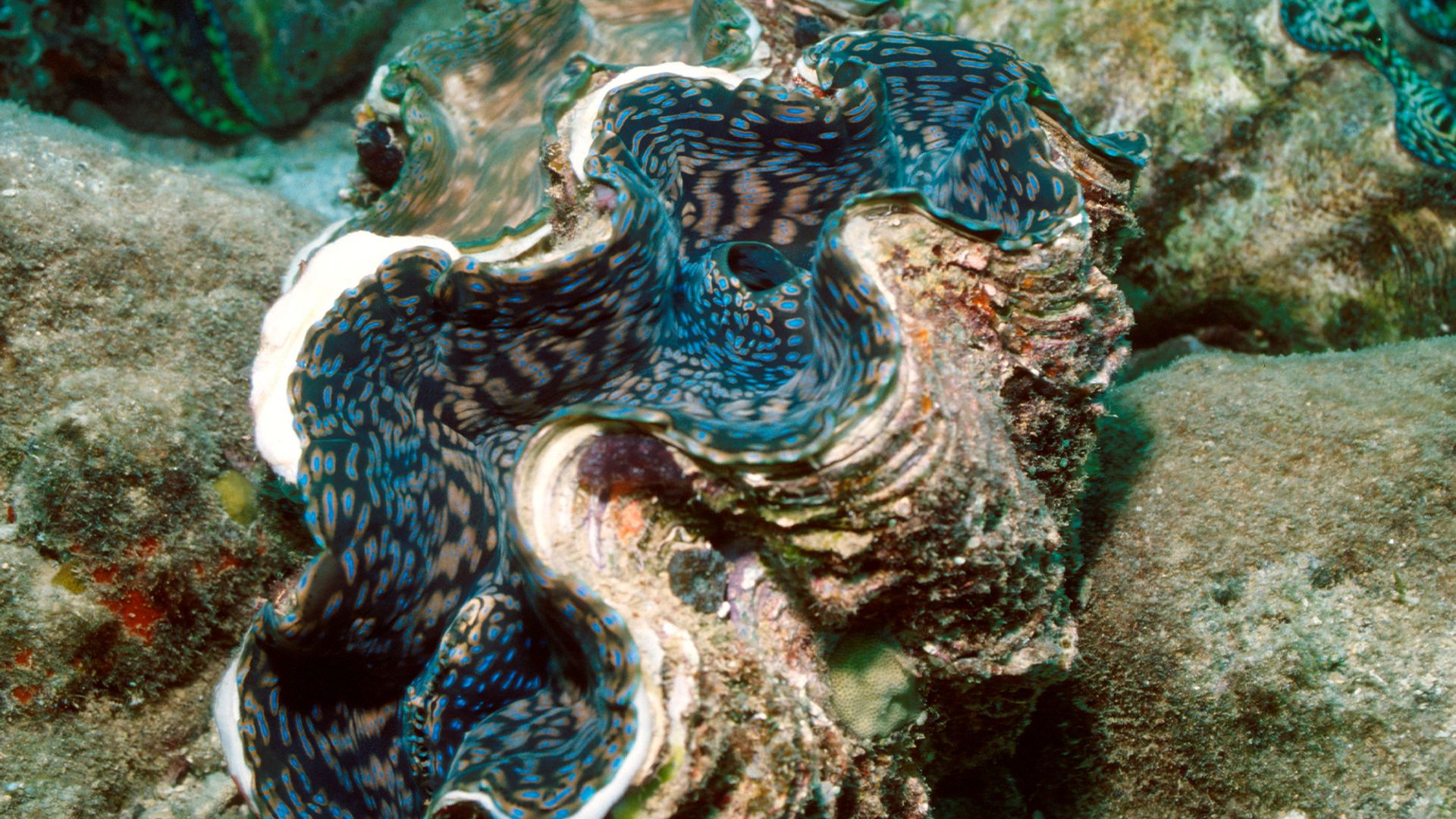
[JACK AYLMER]
CLAMS.
THEY’RE GREAT FOR EATING.
AND FOR FILTERING POLLUTANTS OUT OF OUR BAYS AND RIVERS.
BUT NOW – RESEARCHERS HAVE THEIR SIGHTS SET ON THESE MOLLUSKS FOR A DIFFERENT REASON.
SOLAR POWER.
LET ME SHED SOME LIGHT ON THE SUBJECT.
GIANT CLAMS USE PHOTOSYNTHESIS TO GAIN ENERGY FROM SYMBIOTIC ALGAE THAT LIVE IN THEIR CELLS.
AND OVER THE COURSE OF CENTURIES – THEY’VE DEVELOPED WAYS TO MAXIMIZE THE AMOUNT OF SUNLIGHT THEY TAKE IN-
SOMETIMES ADJUSTING THE ALGAE CLUSTERS’ SPACING ACCORDING TO CHANGING LIGHT CONDITIONS.
IT’S A PROCESS BEING STUDIED AT YALE UNIVERSITY.
RESEARCHERS WANT TO SEE IF THEY CAN TRANSLATE THEIR FINDINGS INTO MORE VIABLE INFRASTRUCTURE FOR SOLAR ENERGY.
[ALISON SWEENEY]
One of the big problems with this is just how hard it is to make photosynthesis space efficient and the clam has exactly perfectly physically solved that problem.
[JACK AYLMER]
LARGE SOLAR FARMS CAN CURRENTLY CAPTURE AROUND 25 PERCENT OF THE TOTAL ENERGY AVAILABLE FROM THE SUN AT ANY GIVEN MOMENT.
BUT BY USING A THEORETICAL MODEL FROM THEIR FINDINGS-
THE YALE TEAM BELIEVES THESE CREATURES HAVE A SOLAR EFFICIENCY RATE AS HIGH AS 67 PERCENT.
A DISCOVERY THEY HOPE SOLAR MANUFACTURERS CAN ONE DAY TAP INTO.
GIANT CLAMS ARE ABLE TO TAKE IN SO MUCH SUNLIGHT BECAUSE OF WHAT RESEARCHERS DESCRIBE AS AN OPTIMIZED GEOMETRY.
THEY ARRANGE THE ALGAE WITHIN THEM INTO NARROW COLUMNS-
WHICH ALLOWS EACH ALGAL CELL TO EXPERIENCE NEARLY THE SAME LIGHT INTENSITY-
SO THEY’RE ALL WORKING TO CAPTURE THE MAXIMUM AMOUNT OF SOLAR ENERGY AT THE SAME TIME.
THE SPACING BETWEEN THESE COLUMNS CAN THEN BE REARRANGED BY THE CLAM BASED ON HOW MUCH SUNLIGHT IS AVAILABLE.
IF THERE’S A LOT OF LIGHT THE COLUMNS CAN BE SPACED OUT WIDER TO HARNESS MORE OF THAT ENERGY.
AND IF THERE ISN’T MUCH LIGHT, THE CLAM CAN CONDENSE THE COLUMNS SO THEY CAN ALL WORK AT THE SAME CAPACITY TO CAPTURE WHAT IS AVAILABLE.
[ALISON SWEENEY]
The clams have this truly optimal system that for any one light intensity as the sunrises and sunsets gives a perfect dose of light to the algae in these columns.
[JACK AYLMER]
THIS SETUP THAT CAN BE AT LEAST 10 TIMES MORE EFFICIENT THAN OTHER PHOTOSYNTHETIC MODELS.
AND IT’S ONE THAT COULD HELP INFORM DECISIONS ABOUT HOW HUMANS GENERATE SOLAR POWER IN THE FUTURE.
TO LEARN MORE ABOUT RENEWABLE ENERGY SOLUTIONS LIKE THIS ONE, DOWNLOAD THE STRAIGHT ARROW NEWS APP AND SIGN UP FOR ALERTS FROM ME – JACK AYLMER – SO I CAN BRING YOU THE LATEST.











